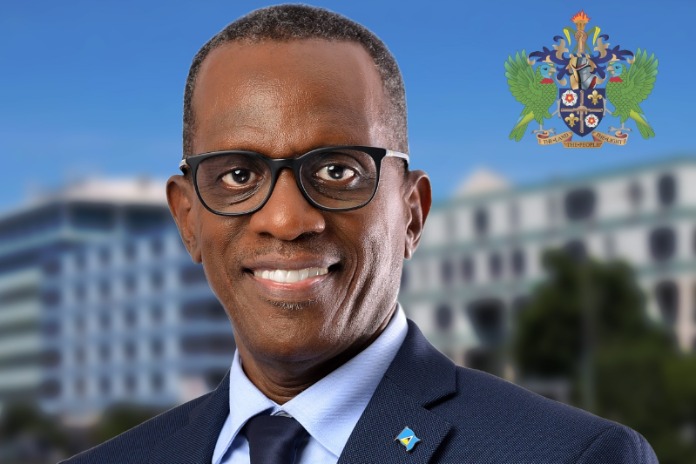- St Lucia parliament to borrow USD$102,128,294.00 from the Export-Import Bank of the Republic of China to provide Budgetary support for the fiscal year 2022/2023
- GOSL is on track to borrow the budgeted amount of 505M for fiscal year 2022/2023
- More than XCD 2.6 million will be invested in the economic stimulus programme
- Prices of Bread to increase in 2023
By Caribbean News Global ![]()
TORONTO, Canada, (CNG Business) – A sitting of the Saint Lucia House of Assembly, Tuesday, December 6, announced one day prior, [Monday], followed by a sitting of the Senate Thursday, December 8, 2022, serves the primary purpose to borrow the amount of USD$102,128,294.00 from the Export-Import Bank of the Republic of China to provide budgetary support for the fiscal year 2022/2023, to meet ‘the people’s budget 2022/23.’
Understanding the landscape in a changing labour marketplace domestic financial challenges and the need for hybrid borrowing, the Government of Saint Lucia [GOSL] is on track to borrow the budgeted amount of 505M for the fiscal year 2022/2023.
The record borrowing of 505M to “leverages public borrowing to advance the administration’s people-first agenda,” is illustrated here.
‘We’re closing out 2022 on a positive note’
A press release for the Office of the Prime Minister [OPM] last Thursday, noted ‘we’re closing out 2022 on a positive note,’ outlining more than “XCD$ 20 million in back-pay owed to public servants.
“More than XCD 2.6 million will be invested in the economic stimulus programme that will benefit all of Saint Lucia’s 17 constituencies by creating new jobs, improving access to local government services and beautifying communities.
“ Currently, public servants are benefiting from a 1 percent salary increase and are getting paid more than they did in 2021. National Insurance Corporation [NIC] pensioners are receiving an additional 4.2 percent on their monthly payments and to offset inflation, duties on price-controlled goods have been suspended,” said OPM.
According to the OPM press release:
“Seventy-one [71] percent of local businesses are on track to make more money in 2022 than they did last year. Major infrastructure projects are creating jobs and private sector investors have begun expanding operations in Saint Lucia. ”The OPM press release also stated that “despite global economic challenges, the United Nations Economic Commission for Latin America and the Caribbean [ECLAC] is projecting 9.5 percent GDP growth for Saint Lucia in 2022.”
Notwithstanding the OPM statement, bread-and-butter issues of high [Youth] unemployment, inflation, crime, healthcare and the announcement of an increase in the price of bread for 2023, give reasons to address the minimum wage.
President of the Bakers Association, Anthony Bousquet, welcomed the long-awaited increase, stating:
“Bakers have been facing the gradual but inevitable upwards movement of cost inputs over the last 14 years; bakers have been faced with acute inflationary pressure during 2022 following the COVID pandemic, and all cost increases were battled on a pricing structure which has been in place since 2008.”
“The creole bread, which is now $0.35, will now be $0.45. The pan loaf, which is now $3.60, will now be $4.35 for the small, and the large, which is now $5.40, will now be $6.50.”

Meanwhile, the recent International Monetary Report [IMF] report on Saint Lucia – Key Takeaways, reiterated:
-
- Inflation is projected to rise to 6.4 percent in 2022;
- Public debt is projected to stabilize around 90 percent of GDP in the medium term;
- Address remaining AML/CFT deficiencies to protect correspondent banking relationships;
- The natural disaster risk remains a near-term challenge and is expected to intensify with climate change;
- Enhancing structural and financial resilience to natural disasters through a long-term integrated strategy 2;
- Developing a strong disaster insurance strategy while structural resilience is built.
“Output is projected to gradually recover to the pre-pandemic level by 2024, slowed by the impacts of the war in Ukraine and the tightening of global financial conditions.
“Public and private investments are constrained by weak balance sheets, as well as higher input costs and supply constraints. Inflation is projected to rise to 6.4 percent in 2022. The fiscal outlook is challenging due to high public debt and large refinancing needs which lead to financing constraints.
“Without additional policy measures, public debt is projected to stabilize around 90 percent of GDP in the medium term, limiting the space for public infrastructure and social investments.” ~ IMF






